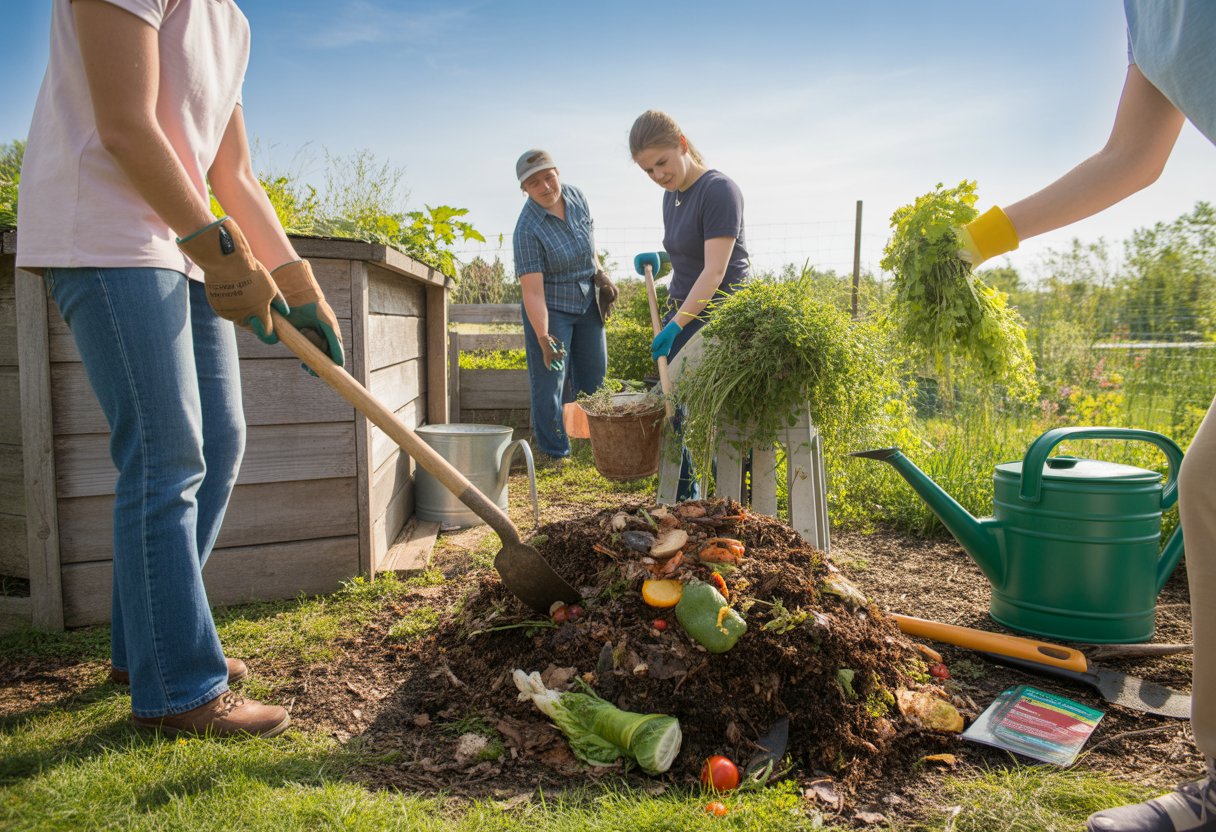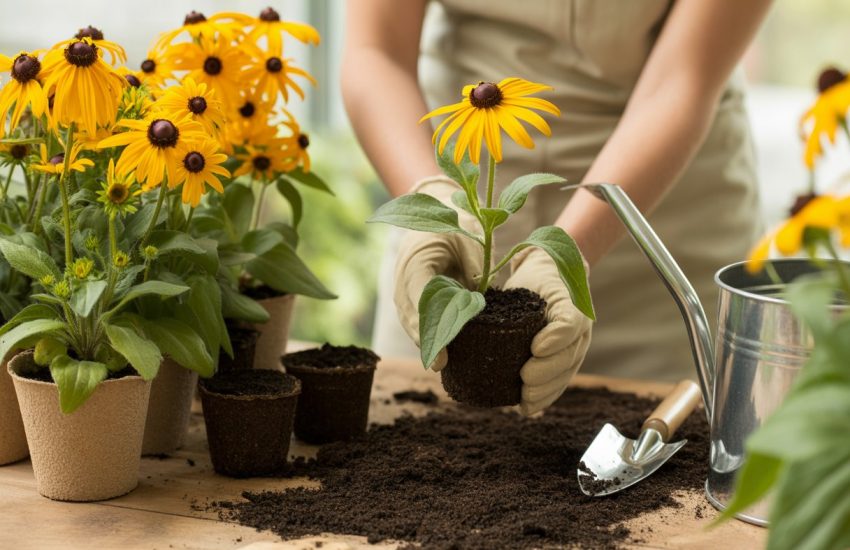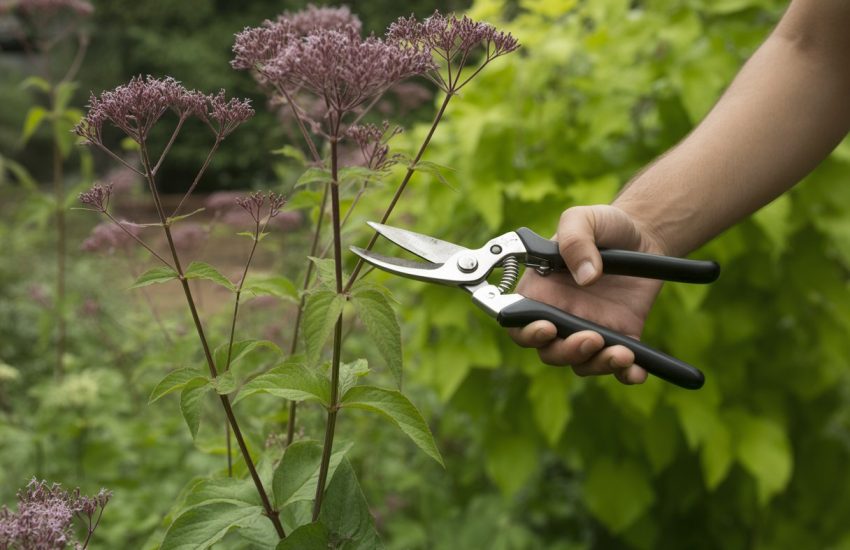Composting Tips for Maine Gardeners: Enhancing Soil Health and Sustainability
Maine gardeners know composting isn’t always straightforward. The state’s cooler climate and short growing season bring their own set of challenges.
If you want to keep your compost humming along, you’ve got to nail ideal compost conditions. That means watching your green and brown ratios and keeping things warm—especially when winter hits and the temperature drops.
A key tip for effective composting in Maine is balancing green and brown materials while keeping the pile insulated to retain heat during cold months.

Pay attention to moisture. Too dry or too soggy, and your pile will stall out.
Aeration matters, too. Give it a turn now and then so everything breaks down faster.
It’s smart to use what’s around you—autumn leaves, seafood shells, and garden waste. Local materials make a compost that’s better suited to Maine’s soil and weather.
Getting Started with Composting in Maine

Managing organic debris in Maine isn’t just about tossing scraps in a pile. The weather can make or break your composting efforts.
Choose your materials, tools, and methods with the local climate in mind. It’ll pay off.
Seasonal swings matter. Compost piles break down differently as the weather shifts.
Essential Materials and Tools
You’ll want a mix of brown and green organic matter. Browns are things like dried leaves, straw, and shredded paper.
Greens include kitchen scraps, grass clippings, and fresh plant trimmings. That carbon-to-nitrogen balance is more important than people realize.
Grab a pitchfork or garden fork, and a bin or backyard compost container. If you have access to a tub grinder, it’ll help with bigger branches.
Mesh bins or enclosed composters keep heat in and pests out—huge bonuses in cold months.
Understanding Composting Methods
A lot of Mainers go for cold composting. It’s pretty hands-off: just layer your stuff and let nature do the work.
If you’re up for more effort, hot composting gets you finished compost faster. You’ll need to turn it regularly and watch moisture levels.
Pick what fits your schedule and patience. Both methods need moisture and air, though, so don’t skip those steps.
Seasonal Considerations for Maine’s Climate
Maine winters slow compost piles way down. Insulate with leaves or straw, and cover the pile to keep in warmth and moisture.
Once spring and summer arrive, everything speeds up. That’s your cue to turn the pile more often and add fresh organic matter.
Fall brings a goldmine of brown material—fallen leaves. Those balance out kitchen scraps you’ve been saving up.
If you time your composting with the seasons, your soil and plants will thank you.
Optimizing Compost Quality for Garden Success

Getting good compost isn’t just about dumping stuff in a bin. You’ve got to think about nutrients, weeds, pests, and what you toss in.
Balancing Nutrients for Effective Compost
Aim for a mix of carbon-rich browns and nitrogen-rich greens. The sweet spot is a carbon to nitrogen (C) ratio of about 30:1.
Browns are dry leaves, wood chips, and lumber scraps. Greens are kitchen scraps, grass clippings, and composted manure.
Too much carbon? Your pile crawls. Too much nitrogen? It starts to stink.
Turn your pile regularly to mix things up and keep the microbes happy. Moisture should feel like a wrung-out sponge—not dripping, not dusty.
Managing Weeds and Preventing Pests
Weeds can creep in if you add seed heads or roots. It’s best to leave out weeds with seeds or stubborn roots.
If you do add them, make sure your pile gets hot—135-160°F for a few days—to kill seeds.
Skip meat, dairy, and greasy foods. They attract pests.
Cover new scraps with browns like wood chips or mulch. A tight lid or fencing helps keep critters out, especially if you’ve got raccoons or other wildlife nearby.
What to Include and Avoid in Your Compost Pile
Toss in organic compost materials like veggie peels, coffee grounds, yard waste, and composted manure.
Browns like wood chips, sawdust, and dry leaves add structure and help the pile break down at a good pace.
Don’t compost treated lumber, diseased plants, invasive weeds, or pet waste. These bring in toxins, diseases, or seeds you don’t want.
Big branches take forever to decompose unless you chip them up. Better to keep things small and simple.
Applying Compost in Maine Garden Beds
How you use compost in Maine depends on your garden and the season. Most folks use it to boost soil organic matter, hold moisture, and help microbes thrive.
There’s no one “right” way—just what works for your space and plants.
Top Dressing and Mulching Techniques
Top dressing is simple: spread ¼ to ½ inch of compost right on your garden beds. It slowly feeds the soil and improves texture without messing with roots.
This works for vegetable patches, flower beds, and around trees.
Some gardeners mix compost with leaf mold or shredded mulch. That combo holds water and keeps soil life buzzing.
Lay down mulch two or three inches deep around plants. It’ll help during Maine’s dry spells and block out weeds.
Compost Use in Vegetable and Ornamental Gardens
In veggie gardens, compost gives roots room to breathe and adds nutrients without overdoing it. Apply it in early spring or after harvest for best results.
Crops like tomatoes, beans, and greens thrive with a compost boost.
Ornamental beds get better drainage and richer soil from compost. Maine’s clay-heavy soils especially benefit from improved aeration and organic matter.
Spread 1–2 inches of compost and either till it in or leave it as a top dressing. You’ll see healthier flowers and foliage—maybe even more than you expected.
Utilizing Compost for Seed Starting and Potting Soil
Maine gardeners often mix compost with stuff like peat moss and perlite when they put together seed-starting mixes. Compost brings in nutrients and a lively crew of microbes, which can really help seeds get going.
If you’re making potting soil, try to keep compost at 25% or less of the mix. That way, you won’t overload seedlings with too much nutrition all at once.
I’d always go for well-aged, fine compost. It’s less likely to sneak in any nasty pathogens that might mess with your young plants.


